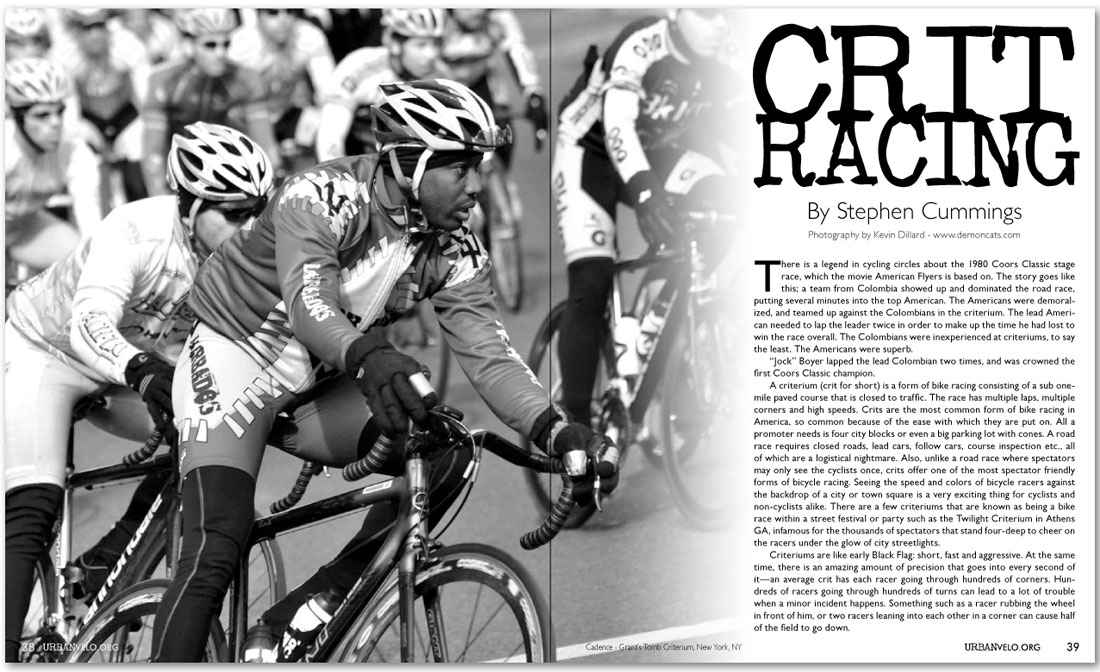|
Crit Racing
By Stephen Cummings
Photography by Kevin Dillard - www.demoncats.com
There is a legend in cycling circles about the 1980 Coors Classic stage race, which the movie American Flyers is based on. The story goes like this; a team from Colombia showed up and dominated the road race, putting several minutes into the top American. The Americans were demoralized, and teamed up against the Colombians in the criterium. The lead American needed to lap the leader twice in order to make up the time he had lost to win the race overall. The Colombians were inexperienced at criteriums, to say the least. The Americans were superb.
“Jock” Boyer lapped the lead Colombian two times, and was crowned the first Coors Classic champion.
A criterium (crit for short) is a form of bike racing consisting of a sub one-mile paved course that is closed to traffic. The race has multiple laps, multiple corners and high speeds. Crits are the most common form of bike racing in America, so common because of the ease with which they are put on. All a promoter needs is four city blocks or even a big parking lot with cones. A road race requires closed roads, lead cars, follow cars, course inspection etc., all of which are a logistical nightmare. Also, unlike a road race where spectators may only see the cyclists once, crits offer one of the most spectator friendly forms of bicycle racing. Seeing the speed and colors of bicycle racers against the backdrop of a city or town square is a very exciting thing for cyclists and non-cyclists alike. There are a few criteriums that are known as being a bike race within a street festival or party such as the Twilight Criterium in Athens GA, infamous for the thousands of spectators that stand four-deep to cheer on the racers under the glow of city streetlights.
Criteriums are like early Black Flag: short, fast and aggressive. At the same time, there is an amazing amount of precision that goes into every second of it—an average crit has each racer going through hundreds of corners. Hundreds of racers going through hundreds of turns can lead to a lot of trouble when a minor incident happens. Something such as a racer rubbing the wheel in front of him, or two racers leaning into each other in a corner can cause half of the field to go down.
continued |
|
|

